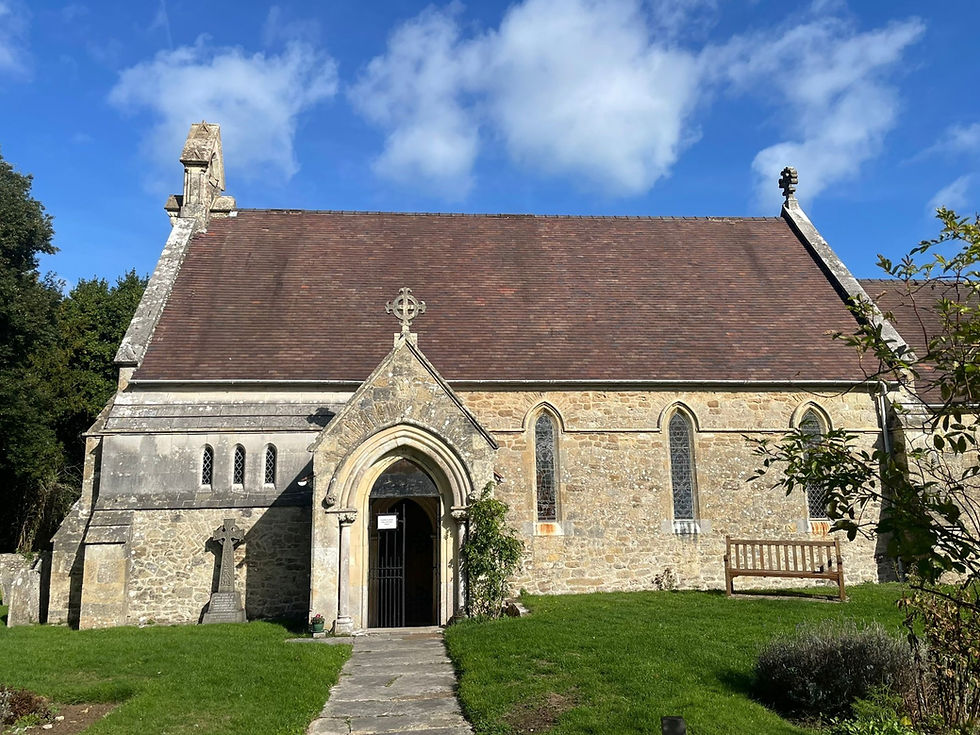History of The Parish Church of The Holy Cross, Binstead
- david-langdon
- Oct 11, 2022
- 3 min read
Updated: Oct 21, 2022

OUR VILLAGE CHURCH dedicated to The Holy Cross, is one of 26 Anglican churches in the Island founded during the Middle Ages. These churches were, therefore, Roman Catholic for several hundreds of years until the establishment of the Church of England in the 16th century. Most are in the rural areas as silent reminders of the settlement patterns and the religious geography of the period. According to the Domesday Book, Binstead was a manor in pre-Conquest times held by the Saxon then Tovi during the reign of Edward the Confessor. As such, it will almost certainly have contained a manorial chapel built by the Lord of the Manor for himself and his tenants, as likely as not of timber. Of this chapel, if it existed, no trace or record survives.
The present church is a Norman foundation, one of several thousand churches in England built or re-built, entirely in stone, within a hundred years of the Conquest, a scale of church-building matched only by that of the Victorians. The founder was almost certainly one of the early Norman bishops of Winchester from around the turn of the 12th century. It is known that the Conqueror granted lands near Binstead to Walkelyn, the first of the Norman bishops, from which stone might be quarried for the cathedral church of Winchester, a grant confirmed and extended by William II in the year 1090. It is also known that the Advowson - the right to appoint the rector - was by this time in the gift of the bishop (and so remained until 1927 when it transferred to the Bishop of Portsmouth on the creation of that diocese). It is hard to resist the conclusion that a bishop of Winchester, either Walkelyn or one of his immediate successors, caused the building of a stone church through which his spiritual responsibilities to the local population could be fulfilled. And those responsibilities were significant in the early Middle Ages when Binstead was a thriving community serving the famous limestone quarries which dotted the ground between the golf course at Stonepitts Lane and Quarr Abbey.
The best limestone was largely worked out by the end of the 13th century, although quarrying continued sporadically until Victorian times. Much of the medieval stone was sent to the mainland. where it occurs in many ancient churches hid Hampshire and Sussed, well as the cathedrals of Winchester and Chichester. It was also used as Quarr Abbey, founded by Baldwin de Redvers around 1132, which oak its name from the quarries in its neighbourhood. Curiously, the name of the village, from Benestede - 'the place where beans are grown', makes no reference to the extraction of stone. Until quite recent times, the church and living of Binstead were remote and of litle account. The church was exempted from all taxation in the rolls of Cardinal Beaufort of 1404 by reason of poverty. Even as late as the 19th century, the church could still be described as a small and plain building with nothing to attract attention". It was not until the reign of Oueen Victoria that the church emerged from relative obscurity. But there is one moment of whimsy in the historical record. After the dissolution of Quarr Abbey in 1536, the then rector seized the opportunity to usurp some of the powers formerly reserved to the abbot, including the proving of wills and marriage without licence. For a while, the rectors were addressed as the 'bishops of Binstead'. The presumption was squashed by the Bishop of Winchester in the 17th century









Comments